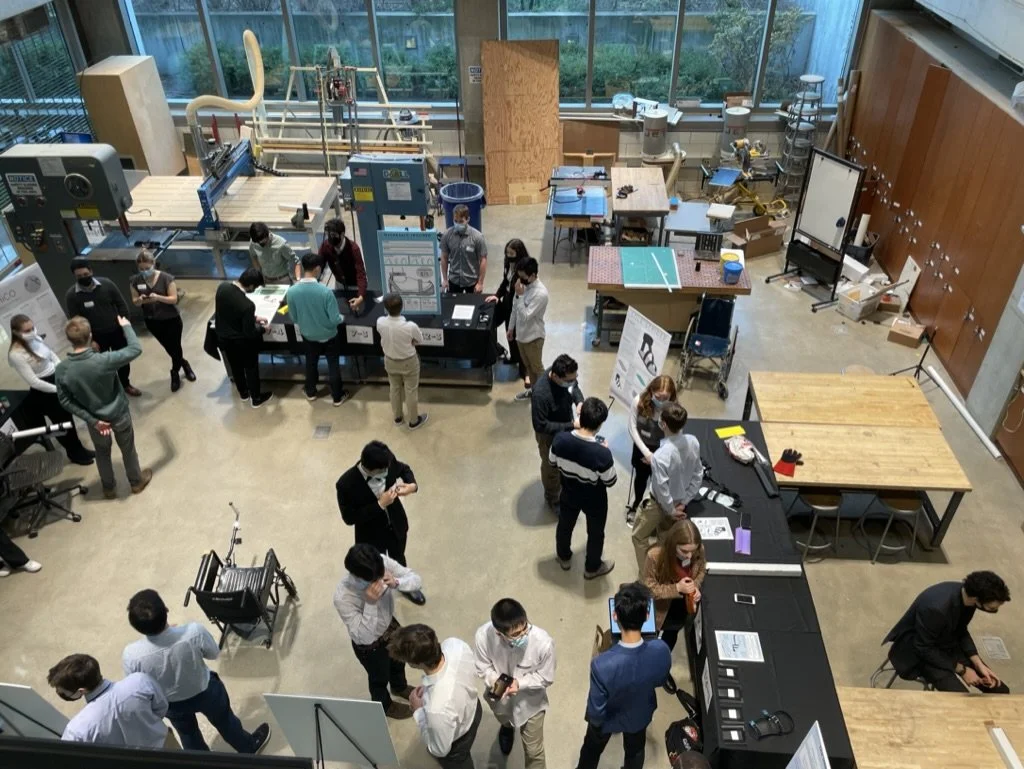Design Thinking is Alive and Well
Design Thinking is Alive and Well
COMPANY INSIGHTS | JULY 31, 2025
image source: Maury Fredricks, Northwestern University 2023-24
I was scrolling through my LinkedIn feed recently and came upon an article posted on July 8, 2025, by Fast Company. The article written by Andrew Thompson and Mark Wilson, titled "Design Thinking is on its Deathbed (and that's okay)," immediately caught my attention.
The article describes a shift in recruiting practices for large corporations. The use of "design thinking" in job postings is becoming less prevalent. Phrases focused on cross-functional leadership and collaboration are now used to attract top talent in design and engineering.
Insights from Higher Education
Undergraduate students at Northwestern University are required to take “Design Thinking Communication”. As the name implies, the curriculum is based on the development of skills and methods to clearly illustrate and describe solutions to real-world problems.
I have enjoyed teaching the ten-week class since 2021 as an adjunct professor with the McCormick School of Engineering. The class is fast-paced and demanding for the student teams, with multiple assignments each week. Teams are organized during the first class, and problem statements are distributed to each team.
The classes are co-instructed by a communication professor working with a design and engineering professor. Collaboration and a high degree of cross-functional discipline are required for the teams to drive projects from a clean sheet to solutions over ten quick weeks, culminating in a final presentation with the client and faculty.
Design Thinking is alive and well.
Design Thinking encourages a human-centered approach to problem-solving, empowering teams to empathize with users, clearly define problems, ideate solutions, rapidly prototype, and test effectively.
This method not only fosters creativity but also cultivates a culture of collaboration and innovation within organizations. By focusing on the end user, companies can create products and services that genuinely meet customer needs, ultimately driving customer satisfaction and loyalty.
Moreover, the diminishing references to "design thinking" in job postings do not diminish its inherent value. Instead, it suggests a maturation of the concept, indicating that organizations are integrating design thinking into their core processes. This evolution fosters a more comprehensive understanding of design principles, emphasizing collaboration and cross-disciplinary skills.
The world is moving faster.
In today's complex and dynamic market, success hinges on the ability to adapt and evolve. Businesses that prioritize cross-functional leadership and collaboration can better respond to challenges, harness diverse perspectives, and tap into a wealth of ideas. Design thinking is about creating a holistic approach to problem-solving that is relevant across all business functions.
In conclusion, while the terminology may evolve, the essence of design thinking as an innovative approach to tackling problems remains vital. Organizations that champion these principles will likely find themselves at the forefront of their industries, not merely surviving but thriving in the face of change. Design thinking isn't dying; it's transforming into an essential element of modern business strategy.
Do you have thoughts on this? I'd love to hear how you are recruiting and developing creative and technical team members.
Fast Company: Design Thinking is on its Deathbed (and that's okay)
Maury Fredricks
CEO
Fredricks Design, Inc.






